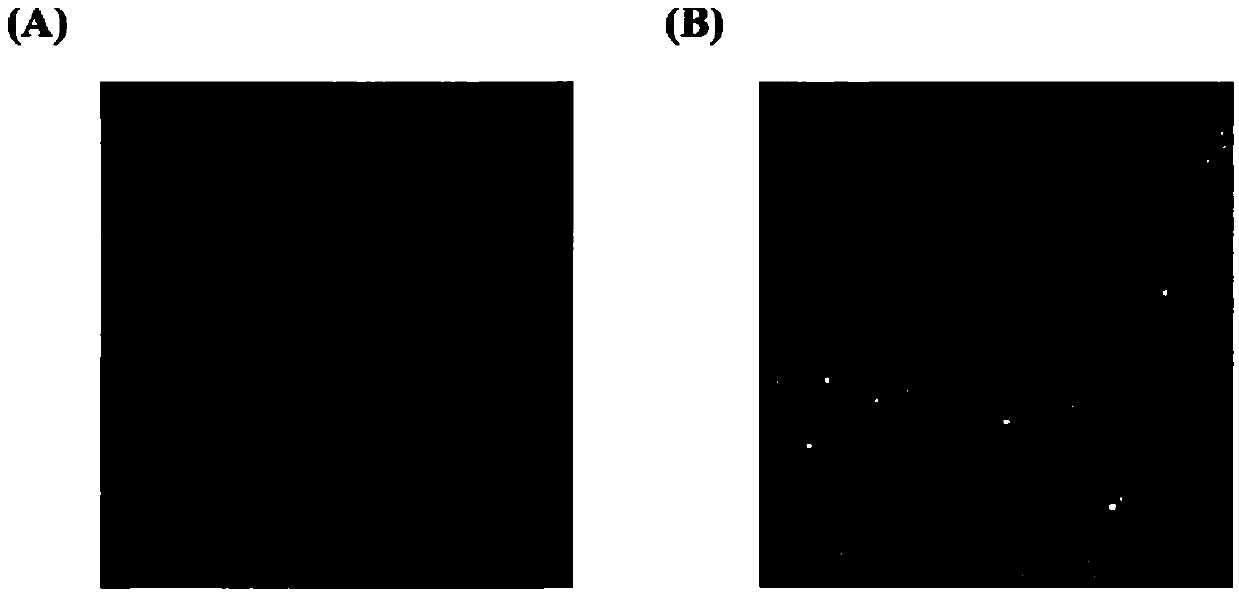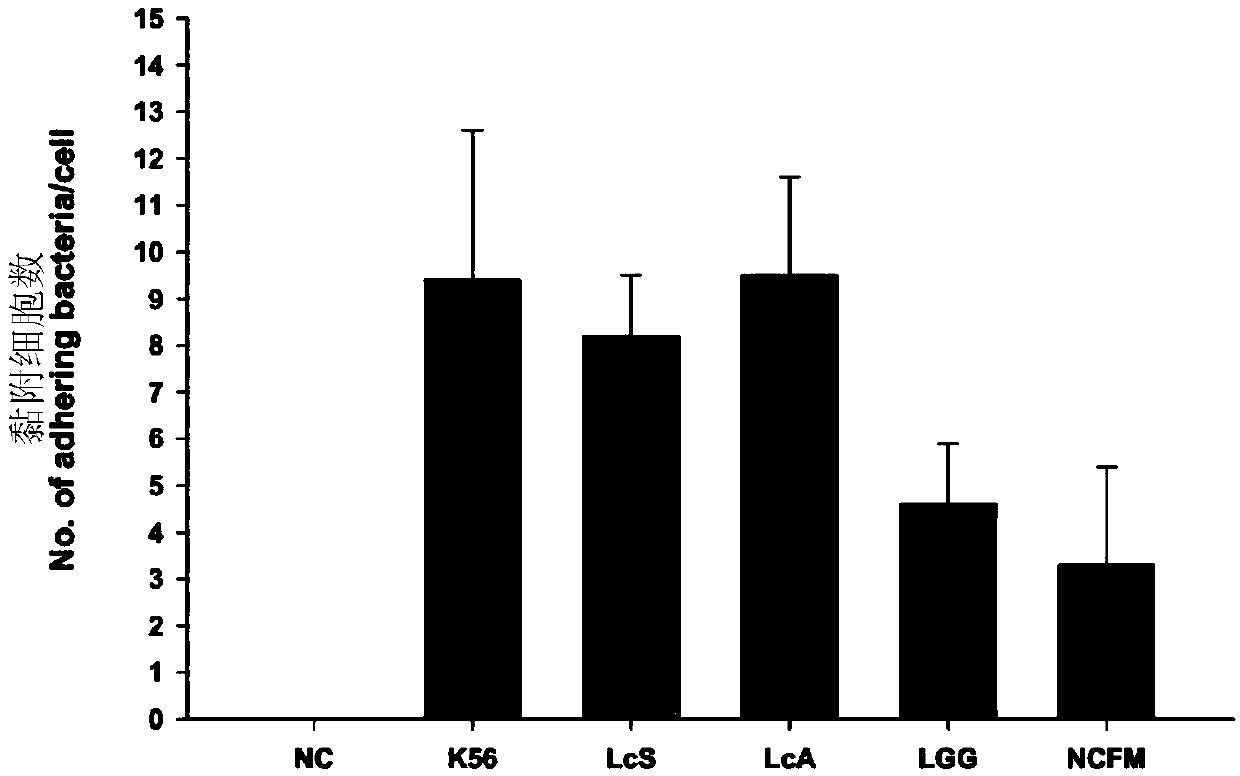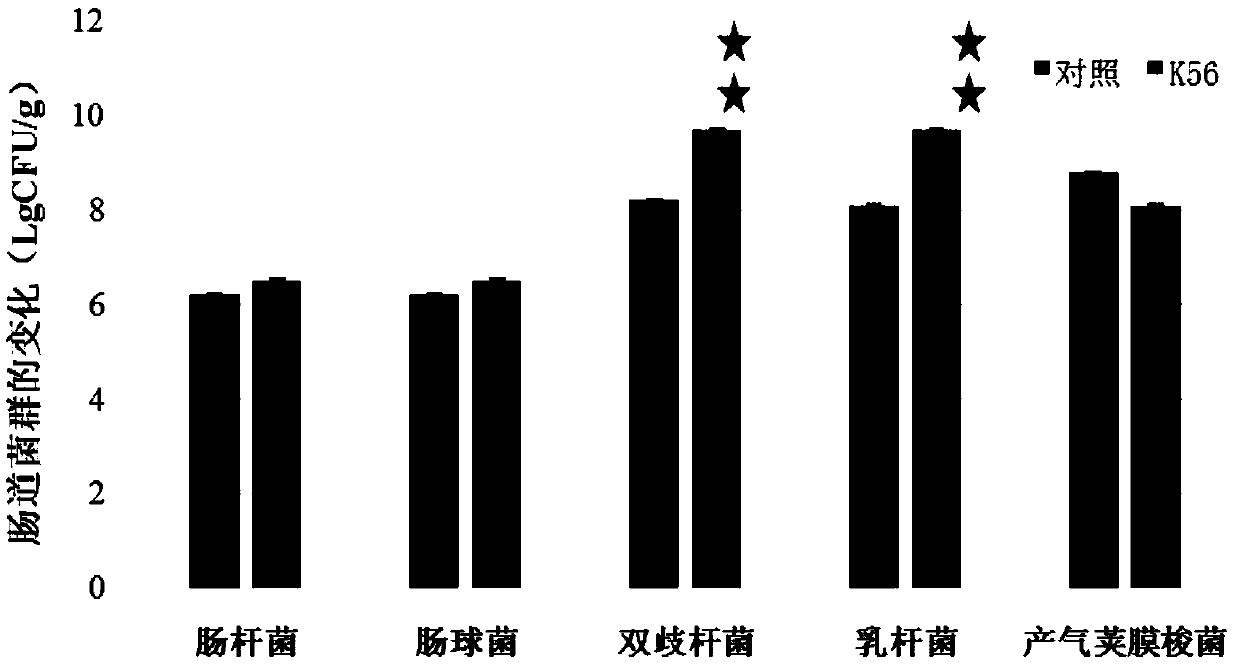New application of lactobacillus paracausei K56 capable of adjusting gastrointestinal flora balance
A technology for gastrointestinal flora and paracheese, applied in the field of microorganisms, can solve the problem that there is no record or enlightenment of the balance effect of Lactobacillus paracasei K56 gastrointestinal flora, and achieve the effect of wide application prospect.
- Summary
- Abstract
- Description
- Claims
- Application Information
AI Technical Summary
Problems solved by technology
Method used
Image
Examples
Embodiment 1
[0024] Embodiment 1: gastric acid resistance test
[0025] Adjust the MRS culture solution to pH 2.0, pH 2.5 and pH 3.0 with 0.1N HCl solution, take 100 μL (10 9 CFU / ml) activated bacteria solution was inoculated in 10mL of test solutions with different pH values, and the initial concentration of viable bacteria was about 10 7 CFU / mL, placed at 37°C for 1 hour to take a sample to measure the number of remaining bacteria. Take out 1mL of the bacterial solution, serially dilute it with 0.85% distilled water, apply it on the MRSagar, cultivate it at 37°C for 24-48 hours, and calculate the number of colonies generated. Another 100 μL of lactic acid bacteria solution (10 9 CFU / ml), added to the MRS culture solution (pH 6.8) without pH adjustment, as a control group.
[0026] Acid tolerance of bacterial strains (%) = (residual bacterial count in test solution containing pH 2.0 or pH 2.5 or pH 3.0 / bacterial count in MRS culture solution without pH adjustment) × 100%
[0027] Acid...
Embodiment 2
[0030] Embodiment 2. bile salt resistance test
[0031] MRS culture fluids were prepared to contain different concentrations of oxgall bile (0.1%, 0.5% and 1%) test fluids respectively. Take 100μL (10 9 CFU / ml) activated bacteria solution was inoculated in 10mL test solution containing different concentrations of ox bile salt respectively, and the initial concentration of viable bacteria was about 107 CFU / mL, placed at 37°C for 1 hour to take a sample to measure the number of remaining bacteria. Take out 1mL of the bacterial solution, serially dilute it with PBS (0.1M, pH 6.2), spread it on the MRS agar, incubate at 37°C for 24-48 hours, and calculate the number of colonies generated. Another 100 μL of lactic acid bacteria solution (10 9 CFU / ml), added to the MRS culture solution (pH6.8) of MRS without bovine bile salt, as a control group.
[0032] Bile salt tolerance (%)=(contain 0.1% or 0.5% or 1% ox bile salt test liquid residual bacterial count / no ox bile salt test liqu...
Embodiment 3
[0036] Example 3: intestinal cell adsorption effect
[0037] Caco-2 cells were cultured in a culture flask, and DMEM cell culture medium containing 10% heat-inactivated fetal bovine serum and double antibodies (100 U / mL penicillin and 100 μg / mL streptomycin) was added to the flask, and placed at 37 °C, 5%CO 2 cultured in an incubator, and the culture medium was changed every 2 days. After the cells adhere to the wall and grow into a single layer of cells (5-7 days), they are digested and passaged with 0.25% trypsin, and stained with 0.4% trypan blue staining solution. The activity is above 95%.
[0038] The adhesion of the strain to Caco-2 cells was detected by the adhesion test, and the results were as follows: figure 1 (Picture B is an enlarged view of picture A), figure 2 The results showed that the intestinal adhesion ability of K56 was similar to that of LcS and LcA, and stronger than that of LGG and NCFM.
PUM
 Login to View More
Login to View More Abstract
Description
Claims
Application Information
 Login to View More
Login to View More - R&D
- Intellectual Property
- Life Sciences
- Materials
- Tech Scout
- Unparalleled Data Quality
- Higher Quality Content
- 60% Fewer Hallucinations
Browse by: Latest US Patents, China's latest patents, Technical Efficacy Thesaurus, Application Domain, Technology Topic, Popular Technical Reports.
© 2025 PatSnap. All rights reserved.Legal|Privacy policy|Modern Slavery Act Transparency Statement|Sitemap|About US| Contact US: help@patsnap.com



